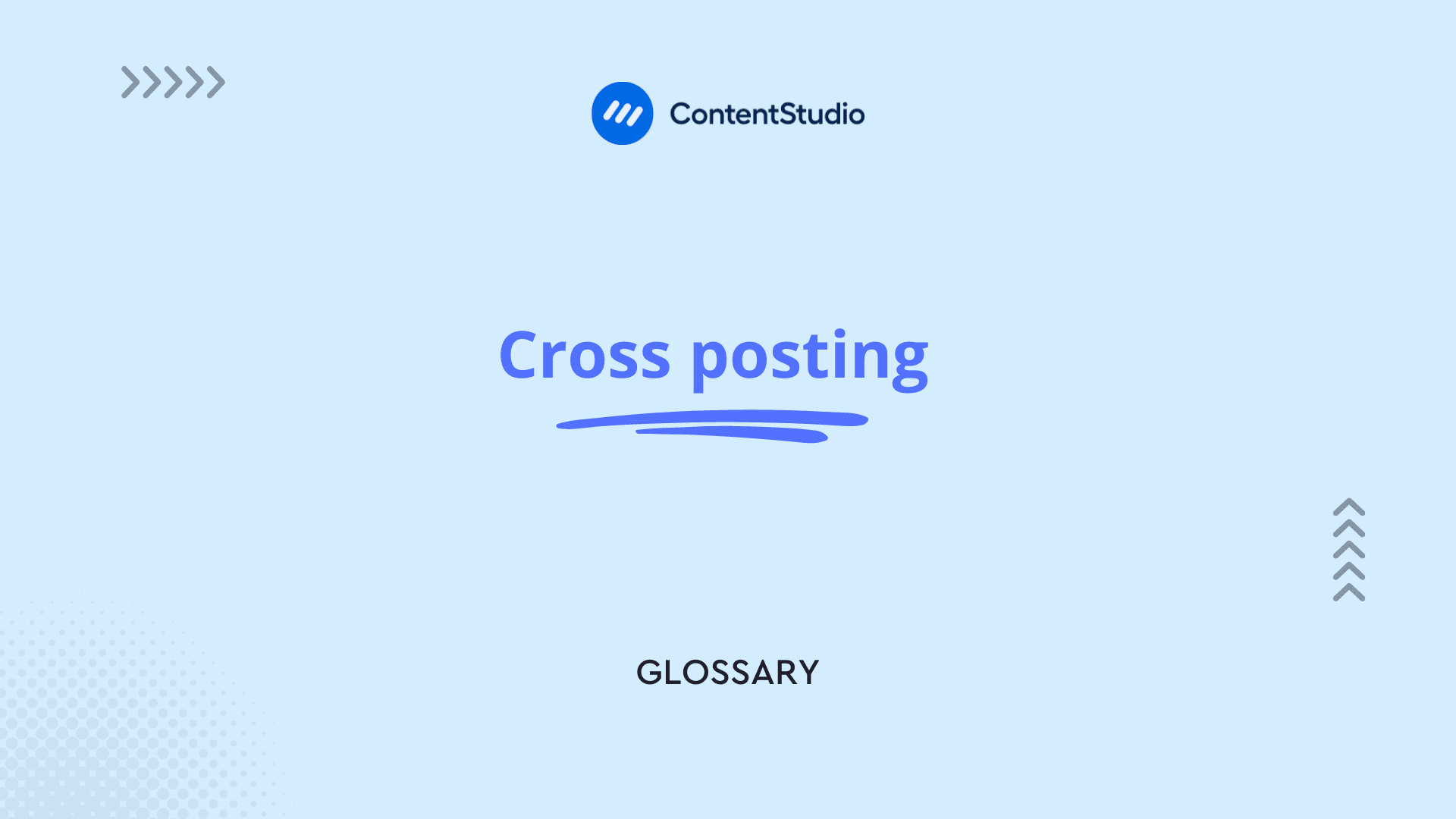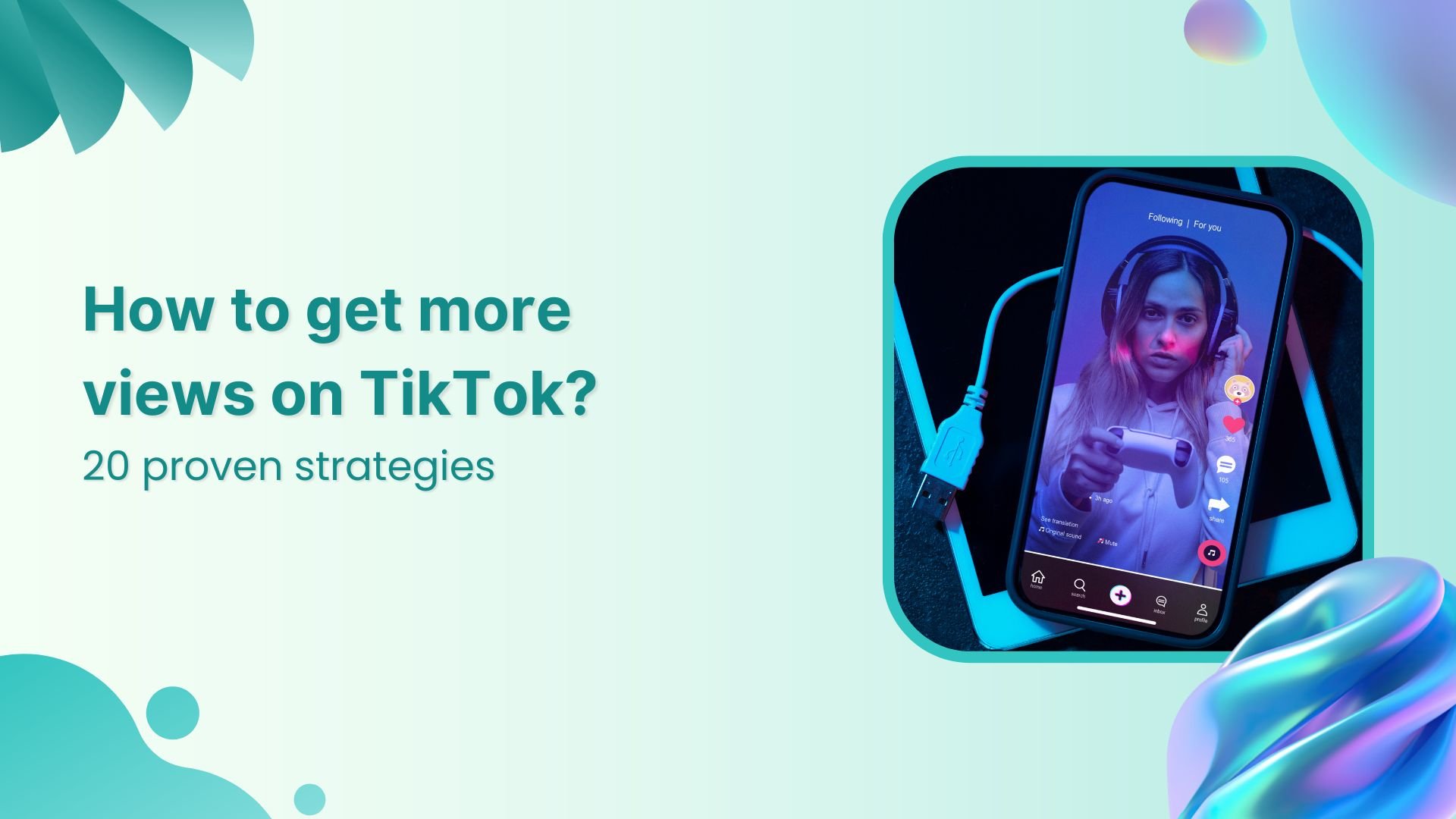Bulk-generate & schedule posts in seconds with Smart Scheduling. Try now!
Cross posting

What is cross posting?
Cross posting refers to the practice of sharing the same content across multiple social media platforms, websites, or online channels simultaneously. This strategic approach to content distribution helps maximize reach and engagement while saving time and resources in the content creation process.
How cross posting works?
Cross posting can be executed through two primary methods:
1. Manual cross posting
Manual cross posting involves individually copying and pasting content to different platforms, making necessary adjustments for each platform's unique requirements and audience preferences. While this method offers more control, it can be time-consuming for businesses managing multiple social accounts.
2. Automated cross posting
Automated cross posting involves using social media scheduling tools like ContentStudio to distribute content across various platforms automatically. These tools help maintain consistent brand messaging while adapting content formats to match platform-specific requirements.
Benefits of cross posting
Following are the numerous benefits of cross posting:
Increased content reach: Publishing content across multiple platforms naturally expands your potential audience reach. By implementing a social media content plan, businesses can effectively tap into different demographic segments that prefer specific platforms.
Time and resource efficiency: Cross posting significantly reduces the time and effort required for content creation and distribution. Instead of creating unique content for each platform, businesses can repurpose and adapt existing content while maintaining quality and relevance.
Consistent brand messaging: When executed properly, cross posting helps maintain consistent brand messaging across all platforms. Through social media automation, businesses can strengthen brand recognition and build trust with their audience across different channels.
Enhanced content performance analysis: Cross posting through dedicated platforms enables businesses to implement a proper social media monitoring strategy across multiple channels from a centralized dashboard, making it easier to track engagement metrics and optimize content strategy.
Best practices for cross posting
Platform optimization
While cross posting saves time, it's crucial to optimize content for each platform's specific requirements:
- Adjust image dimensions to match platform specifications
- Modify caption lengths based on platform limitations
- Adapt hashtag usage according to platform norms
- Customize calls-to-action for different platform audiences
Timing considerations
To maximize engagement, consider the following timing aspects:
- Schedule posts for optimal times on each platform
- Account for different time zones when posting globally
- Avoid simultaneous posting across all platforms to maintain organic reach
- Space out posts to maintain consistent presence throughout the day
Content customization
To create engaging content that resonates across platforms:
- Adapt your tone and language to match each platform's culture
- Use platform-specific features and formatting options
- Include relevant hashtags and mentions appropriate for each platform
- Modify visual content to match platform preferences
Common cross posting mistakes to avoid
Identical content across platforms: Posting exactly the same content across all platforms without customization can appear robotic and fail to leverage each platform's unique features and audience expectations. So, you need to repurpose and refine your social media content.
Ignoring platform-specific features: Failing to utilize platform-specific features like Instagram Stories, Twitter polls, or LinkedIn articles limits engagement potential and may result in suboptimal content performance.
Automated posting without review: While automation streamlines the process, posting without human review can lead to formatting issues, broken links, or inappropriate content timing during sensitive events.
Cross posting tools & implementation
Modern social media publishing platforms offer sophisticated cross posting capabilities that help businesses maintain efficient content distribution while ensuring platform-specific optimization.
Key features to look for include:
- Content customization tools for each platform
- Automated scheduling and posting
- Analytics and performance tracking
- Team collaboration features
- Content calendar management
- Asset library organization
Future of cross posting
As social media platforms evolve, cross posting continues to adapt to new requirements and opportunities. Emerging trends include:
- AI-powered content optimization
- Advanced automation capabilities
- Improved analytics and reporting
- Enhanced platform-specific customization
- Integration with emerging social platforms
- Better multimedia content handling
Overall, this comprehensive approach to cross posting helps businesses maximize their social media presence while maintaining efficiency in their content distribution strategy. With the right social media management platform, businesses can streamline their cross-posting workflow while maintaining content quality and engagement across all channels.
Conclusion
Cross-posting remains a valuable strategy for maximizing content reach while conserving resources, but its effectiveness depends on thoughtful implementation that respects each platform's unique characteristics. The most successful cross-posting approaches strike a balance between efficiency and customization, using the same core content but adapting it meaningfully for each platform's format, audience, and cultural expectations.
By following the best practices outlined in this guide and utilizing specialized tools like ContentStudio's social media management platform, you can implement a cross-posting strategy that expands your reach without sacrificing engagement quality. The result is a more efficient content workflow that respects both your resource limitations and your audience's platform-specific expectations.

Create, plan, schedule, and publish posts on all social media networks
Recommended for you


Powerful social media management software
14-day free trial - No credit card required.


